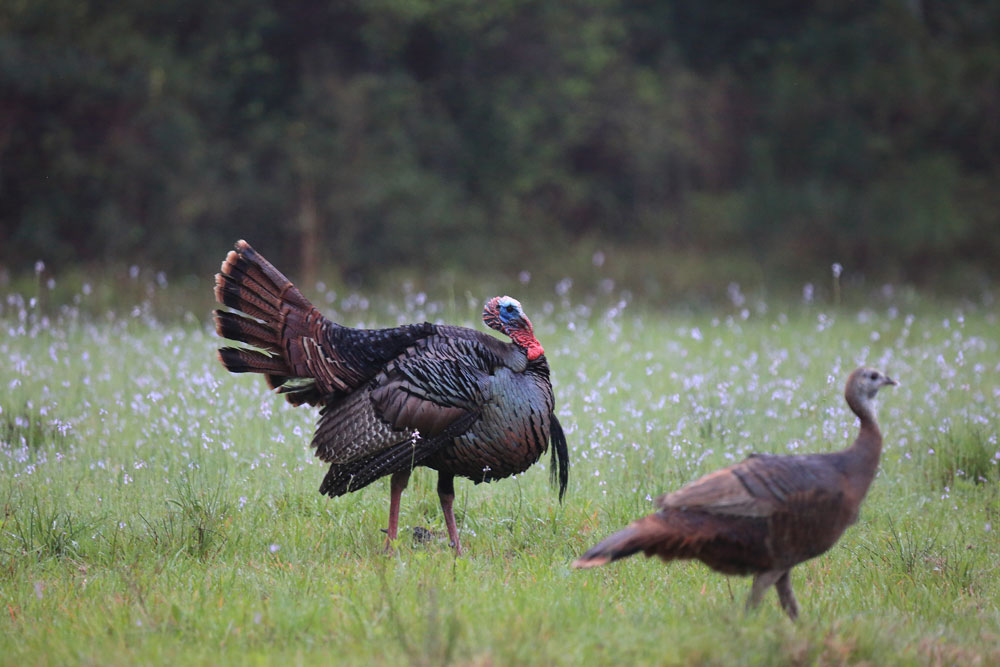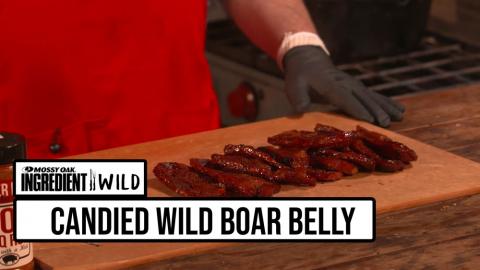provided by John Phillips
Osceola turkeys are a subspecies of the eastern wild turkey. The Osceola turkey got its name from Chief Osceola of the Seminole Indian nation. Today about 100,000 wary and hard-to-hunt Osceolas live in central and south Florida, primarily south of Orlando. Most Osceolas live on about 20 public Wildlife Management Areas (WMAs) with some on private lands. One of the men who knows the Osceola best is Keith Kelly, the manager of the Dee-Dot Timberlands, 25,000 acres of timberland near Jacksonville, used exclusively for family, friends and charity turkey hunts.

Last year, I was in a blind with a veteran about 150 yards from the roost tree. The turkeys gobbled while they were on the limb. I didn’t call to them, but I did give a few tree calls to the turkeys to let them know where we were. I wanted the gobbler to think I was a hen that had flown down early, and that I was feeding early.
Once an Osceola flies down, I’ll only give that gobbler soft purrs, clucks and soft yelps. I may scratch in the leaves a little. Now the gobbler may not come to me when he flies off the roost; he may remain with his hens and then breed them. However, sooner or later he’ll usually return to look for me. Many turkey hunters probably will get up and move, or try and use some loud calling to force the gobbler to come to them. However, our Osceola turkey woods in south Florida are so open, most of the time if you try and move on an Osceola gobbler, you’ll spook him and not kill him. Besides, when guiding for a wheelchair hunter, moving is almost impossible without being seen.
I’ve sat in one spot for three or four hours before waiting for a gobbler to come back and find me. On other hunts, the gobbler has flown down and landed right in front of our blind. When we set up with a vet and a blind, we’re on turkey time. If we stay in the same place, most of the time the turkey will come back to where he’s heard that soft calling. Because south Florida has so few roost sites, often several gobblers and hens will be roosting in the same general area. If you can hear several gobblers from the roost, you may assume that when the birds fly down that the boss gobbler will go off with the boss hen, and then a majority of the flock will move out away from the roost tree. However, many times there will be some two-year-old gobblers at that roost site that will fly right to our blind within gun range to try and pick up this new hen they’ve heard and not get in a fight with the boss gobbler by trying to breed one of his hens.
I’m sure you’ve heard the saying, “No two turkeys are alike.” Many people believe that the Osceola tom doesn’t gobble very loudly. That may be true in the northernmost range of these Osceolas’ habitat with thicker woods and more palmita flats, but actually the vegetation muffles quite a bit of their gobbles. You may hear a turkey gobble very softly and think he’s 200 yards away when he only may be 70 yards away. In south Florida where the woods are much more open, you may hear a turkey gobble so loudly that you think his gobbles are shaking the earth. The other problem with hunting south Florida Osceolas is you can hear them better and further away from you down there, but also they can hear you at greater distances.






























